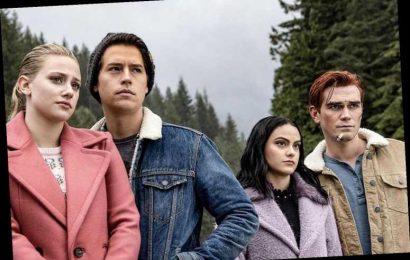[This post originally appeared as part of Recommendation Machine, IndieWire’s daily TV picks feature.]
Where to Watch ‘Beforeigners’: HBO Max
TV is littered with “what if” stories — worlds that take our own and add one huge change. Often, that means organizing a show around one massive mystery or event and following the people left to parse the aftermath.
The main thing that separates “Beforeigners” from other shows like it is the massive time jump it takes in its very first episode. After introducing its inherently hook-y premise — groups of people from centuries, and even millennia, past pop up in the water outside present-day Oslo — the show immediately chooses to spend its time in a world where that new reality isn’t as unfamiliar. Tensions still run high in certain corners, but the intervening years have brought new institutional changes for daily life in the Norwegian capital. Runes appear on public signage, new terms (both preferred and derogatory) emerge to describe the newcomers, and there’s a fresh bureaucratic infrastructure designed to help acclimate these transtemporal visitors to their new home.
It’s a home where they don’t always feel welcome. “Beforeigners” is able to tap into its immigration themes without resorting to purely an on-the-nose, manipulative metaphor. The scene-to-scene details indicate real effort to understand what these groups of “multi-temporal” people might mean for society at large. Their arrival wouldn’t be without trauma and pain and loss. Some would feel more comfortable living in an era hundreds or thousands of years beyond the one they knew, while many others would try their best to carve out a world as if nothing much had ever changed.
It’s why the show almost doesn’t need the murder-mystery that weaves its way through the opening season. Even in dimension-bending realities, though, there are still dead bodies on shores and detectives with substance abuse problems to crack the case. Luckily, “Beforeigners” has a pair of compelling characters at its center, with detective Lars Haaland (Nicolai Cleve Broch) learning how to work with new recruit Alfhildr Enginnsdóttir (Krista Kosonen). Through Alfhildr, the audience gets to see someone who was once a Viking-era soldier do her best to help bring about justice in a much different way.
In addition to demonstrating how this world shows different levels of hospitableness to those arriving through mysterious underwater time portals, it also pinpoints a very recognizable reaction to commodify the inexplicable. Even for a process marked by tragedy for those who find themselves unwittingly at the center, this version of Oslo is no stranger to niche industries that pop up in its wake. Though “Beforeigners” has an understanding of why certain people might find it appealing to fully commit to a 19th century lifestyle alongside those cloistering themselves from the rest of the city, there’s a nod to the fact that some of that process is designed for a different kind of more cynical gain.
What co-creators Anne Bjørnstad and Eilif Skodvin (who also served the same role on “Lillyhammer” back a decade ago) manage to zero in on are the ways that people compartmentalize what they can’t explain. It’s a lot easier for most people in “Beforeigners” to try to ignore the implications of time travel (in a similar way to how those in present-day Seoul face the unthinkable in “Hellbound”). Yet, even in “Beforeigners,” when faced with what amounts to a significant humanitarian crisis, there’s also a prejudiced, NIMBY-like underpinning that a lot of the ancillary characters feed into in both casual and more organized ways.
With most of the story delivered through the lens of law enforcement tasked with figuring out the various abuses and crimes that grow out of such an unexpected cosmic tear in reality, there’s still plenty of other reasons that “Beforeigners” stays eminently watchable. Most of them play out in the series’ opening credits, with Lars (and sometimes Alfhildr) driving through Oslo with Bobby Bland’s “Ain’t No Love in the Heart of the City” playing over a montage of kids playing, people in animal pelts walking around business centers, and graffiti expressing either solidarity with or animus toward thousands of new neighbors from throughout history. The rest, as hinted in the closing sequences of Season 1, is all the more reason to be excited about where the show can go next.
Missed any other outputs from Recommendation Machine? You can read every past version here.
Source: Read Full Article







